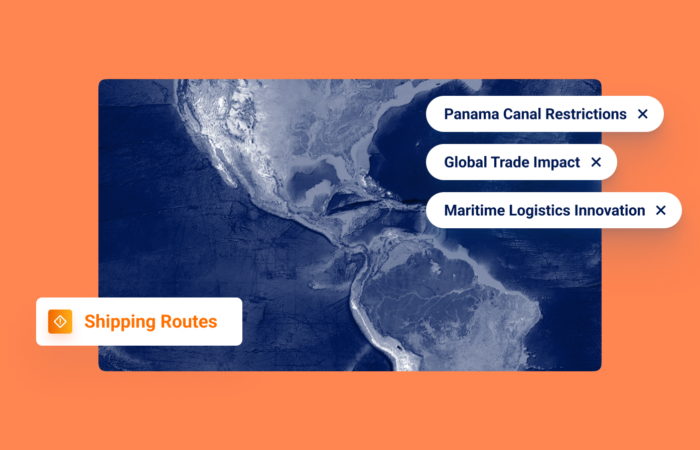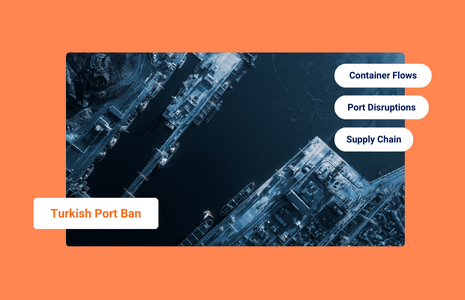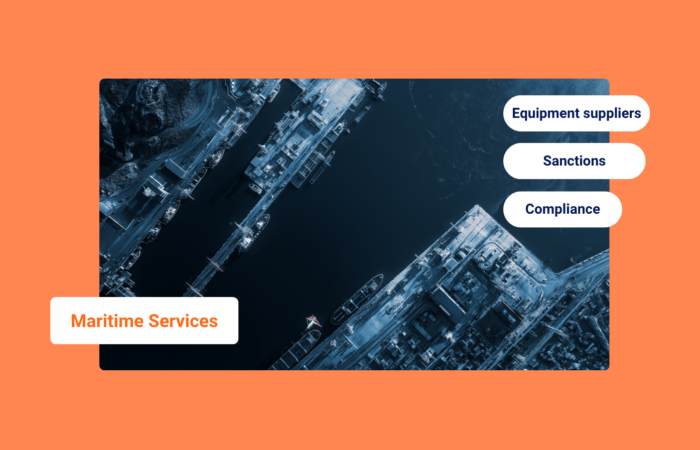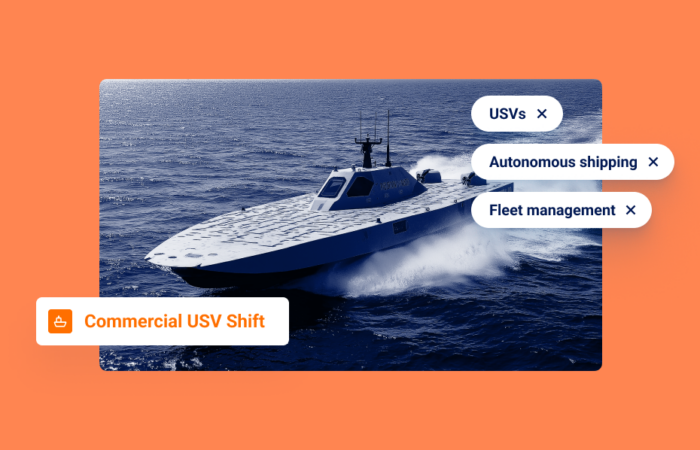Supporting the Unique Maritime Needs of the Pharma Industry

What’s inside?
In the pharmaceutical industry, where precision and adherence to strict timelines are essential due to the sensitivity of cargo, knowing the exact arrival time becomes a critical factor. Cargo can become unviable if delays are too lengthy. Precise delivery schedules allow for careful planning of distribution, minimizing potential disruptions and ensuring that medications are available when needed.
With different regulations and stakeholders around the globe, there are many points in the shipment journey where something could go wrong. These potential vulnerabilities mean that visibility is essential for pharmaceutical organizations seeking to maintain their reputation and the quality of their manufactured products.
Air transportation may be the quickest way of transporting pharmaceutical goods, but it is costly and not a sustainable option. “Maritime shipping is by far the most carbon efficient means of transporting goods, emitting only a fraction of the CO2 per tonne-kilometer of a truck, train or airplane,” according to the World Shipping Council.
“Supply chain visibility provides a “single-source-of-truth” regarding a product’s status and supply chain performance,” according to Pharmaceutical Technology. But current maritime solutions, for example, Internet of Things (IoT) solutions used by many in the industry, feature “black box” technology that does not offer transparency.
Schedule and ETA reliability are still big concerns for pharma companies, as their shipments contain sensitive and highly valuable cargo. Some existing maritime visibility solutions for ocean shipments have perhaps underperformed, creating a negative impression.

Insights for Enhanced Planning
When planning a shipment with sensitive cargo, it is imperative to have the most reliable data.
With advanced analytics offering insights into how ocean carriers performed based on their own shipment data, procurement teams can make better sourcing decisions. Effective advanced analytics should offer a breakdown of carrier performance based on multiple factors, including:
- The stability of carriers’ published routes
- A breakdown of carrier reliability
- Tracking of carrier ETA changes
- Clear visualization of the number of active shipments at risk of delay
Additionally, it is possible to access exclusive insights on the performance of container ports and terminals, including congestion status, a breakdown of turnaround times by vessel size, and much more. This can allow pharmaceutical companies to plan shipments based on the most reliable data, which remains available at all times.
In Transit: Never Get Left in the Dark
When your shipment is in transit, having full, real-time visibility of the journey is non-negotiable. With an Ocean Freight Visibility solution, life sciences companies can track a shipment and receive answers on the status and location of shipments and milestones from Gate In at the port of loading (POL), to Gate Out at the port of discharge (POD).
As mentioned in a previous Windward blog post, “There are many milestones along the container journey that are important. For example, vessel arrival at the transshipment port, vessel departure from the transshipment port, and all the port calls along the vessel journey. The two critical and the least reported milestones by carriers are when the vessel arrives at the POD (actual time of arrival) and vessel departure from POL (actual time of departure)…A solution that uses Maritime AI™, such as Windward Ocean Freight Visibility, can fuse multiple data sources with AI technology, ensuring the gaps of missing information are filled. Proprietary geofencing provides information directly, and in real-time, solving latency issues.”
For over 12 years, Windward’s maritime experts have been enhancing the global mapping of container terminals and ports. The boundaries of each terminal (“polygons”) were mapped based on official information provided by the terminals and are monitored daily for changes to any of the 1,400+ polygons. Part of the daily monitoring process is based on our extensive and constant tracking of all container vessels globally. This enables real-time updates on vessel departures from POL, arrivals at POD, and arrivals/departures from transshipment ports.
When transshipments are involved, which they often are, it is helpful to know which transshipment port is best to ensure maximum efficiency. Maritime AI™ technology can assist in understanding whether the transshipment port is more efficient with smaller or larger vessels, and can customize the criteria to your specific shipment. That way, you can decide which transshipment port will be best, but you need the most accurate data and insights to make the most efficient decisions.

Arrival: Accuracy, Accuracy, Accuracy
The last part of your shipment’s maritime journey is arrival at the POD. Having an accurately predicted ETA is a game changer, especially when your cargo has to be on shelves by a specific time, for example, with pharmaceuticals that have a sell-by date. For most industries, a container arriving late can lead to late fee costs, which are a major issue for shippers everywhere. But for the pharmaceutical industry, there is an additional layer of risk, as time-sensitive shipments experiencing unexpected delays can lead to a full container load of cargo being unviable. Maritime AI™ Predicted ETA allows you to plan ahead by knowing earlier than ever before when your containers will arrive, how late they will be compared to carrier information and the reasons for delay. Windward’s eBook dives into greater detail about what these reasons for delay are:
- Transshipment delay: according to Windward’s research, 25% of delayed shipments are caused by a complication during maritime transshipment.
- Rollover: can be caused by carriers overbooking space on the vessel scheduled to transport a container, leading to the inability to load it onto that vessel due to lack of space or excess weight. Another reason is the unplanned rerouting of the allocated vessel.
- Late departure: a container is late because it was late to leave the port of loading.
- Short transshipment buffer: transshipment has a high risk of not being completed as scheduled, due to the transshipment window being too small.
- No vessel allocation: no vessel has been allocated to load your container(s) at the POL or TSP.
- Unfeasible journey: the expected transit times provided by the carrier are too short, based on Windward data and estimations.
ETA insights will improve efforts to mitigate the impact of these shipping delays, allowing pharmaceutical companies to be proactive. These insights can help improve the certainty of containers’ arrival dates, help organizations understand why containers are late, and minimize late fees and last-minute haulage rebooking costs.
Knowing when the vessel has arrived in real-time at the final POD can assist in making the necessary arrangements for the additional transit to the warehouse. This is important so that the next mode of transport, whether it be truck or rail, knows when to arrive at the port to collect cargo. Having accurate information, made possible by Windward’s Maritime AI™ geofencing capabilities, enables life sciences companies to plan accordingly, whether it be possessing the right amount of employees on a shift – at the right time, having the right amount of space in the warehouse, or if cooling facilities are needed due to the specific type of cargo.
A Maritime AI™ decision support platform can be the solution that pharma companies have been looking for. With best-in-class data and AI capabilities, the most accurate ETA predictions and reasons for delay, and actionable insights to mitigate shipment risk – the transition from air to ocean shipping can occur with complete confidence. By automating the monitoring and tracking of their shipments, pharma companies can maintain the integrity of their products and fulfill their commitment to providing reliable products worldwide.












